Vienna's hidden baroque splendor
Karl Hohenlohe once again goes into stately houses whose charm lies in secret - namely because their gates are only open to a few privileged visitors or residents.
In three episodes he explores baroque splendor and the splendor of the Wilhelminian era. These hand-picked houses tell their own stories - and there are plenty of surprises!
Co-production | ORF III and Clever Contents
Sponsor | Vienna Film Fund
Partnership | WKO stone and ceramic industry,
WKO leisure and sports companies, Austrian Castle Authority
Genre | documentary
Director | Susanne Pleisnitzer
Production Manager I Celina Hart
Cut I Anna Fakete, Alexander Frohner and Michael Ingram
Length | 3 x 45 minutes
Production year I 2023
First broadcast | January 9th, 16th and 23rd, 2024
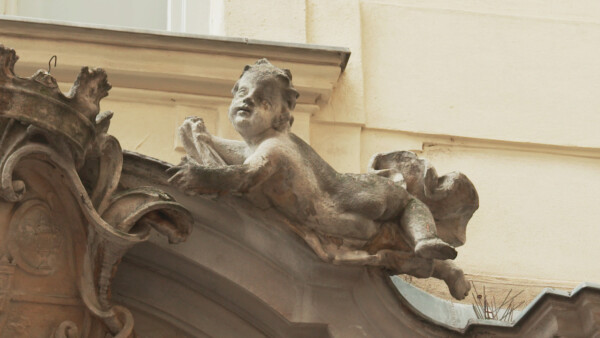

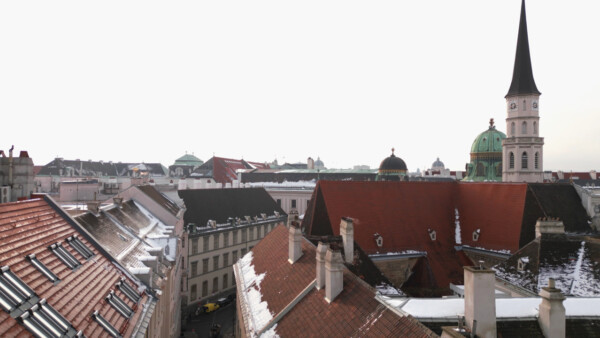
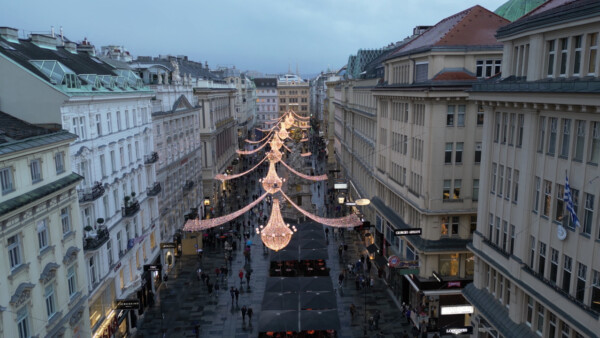
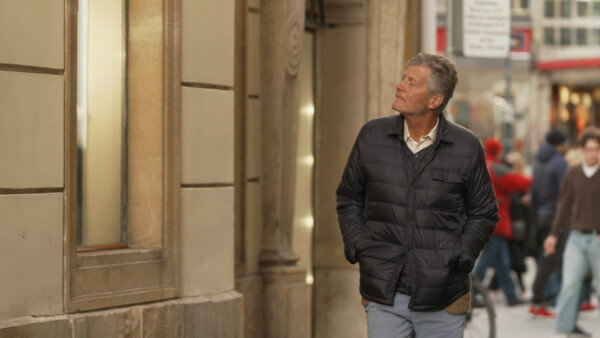



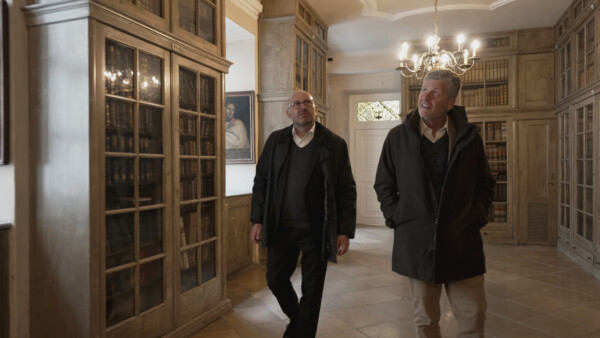
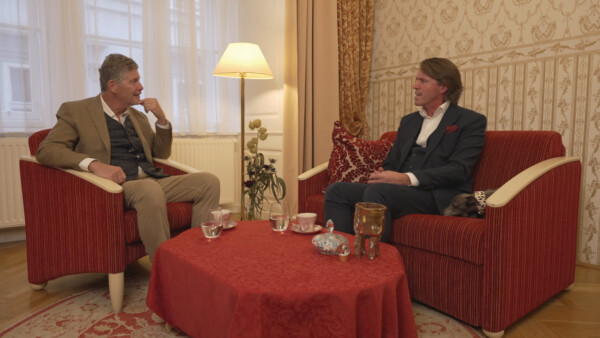
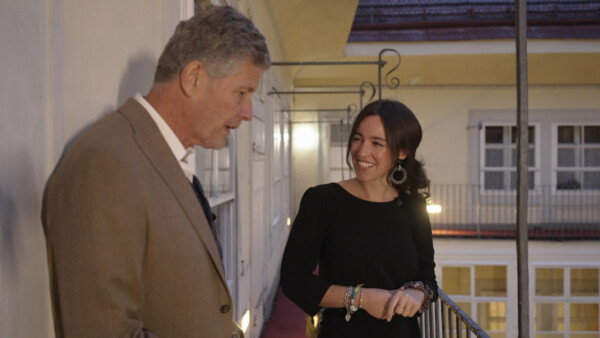
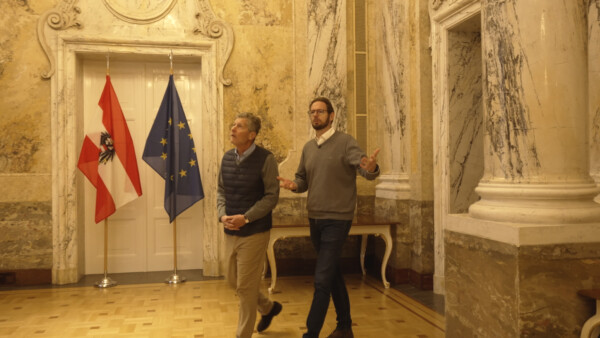
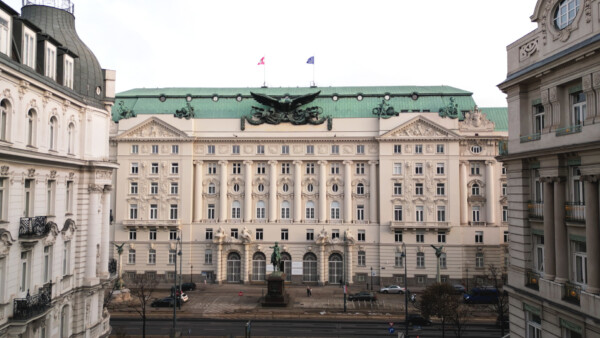
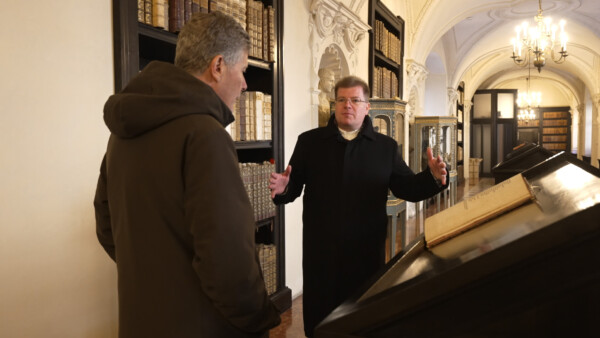
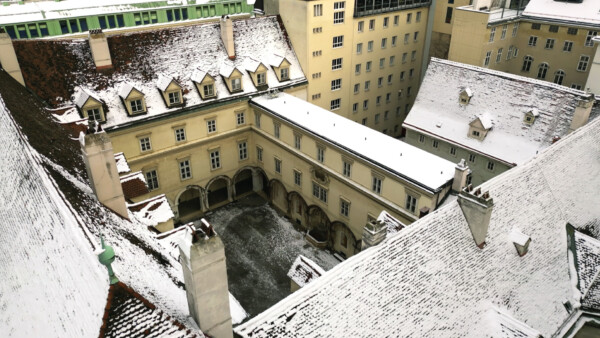
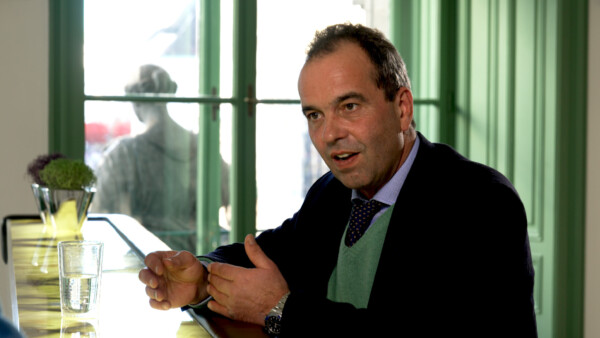
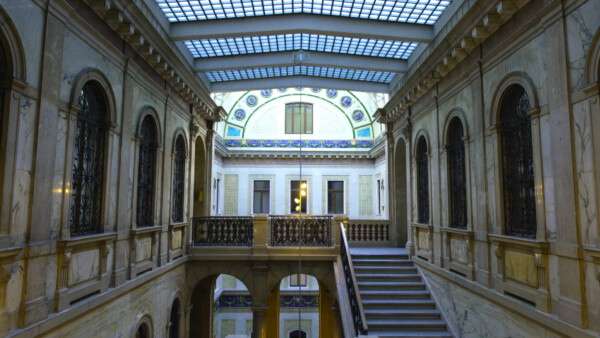
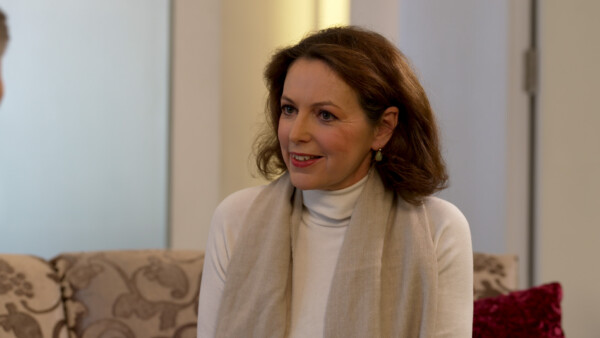
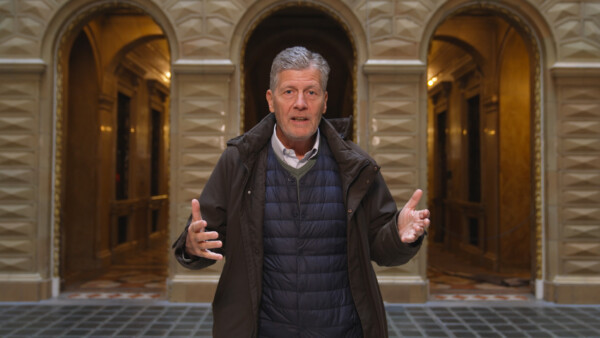
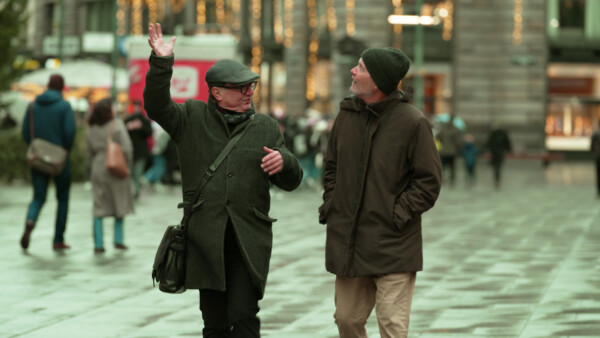

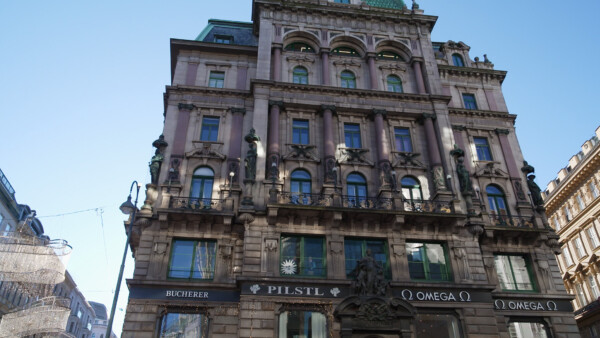
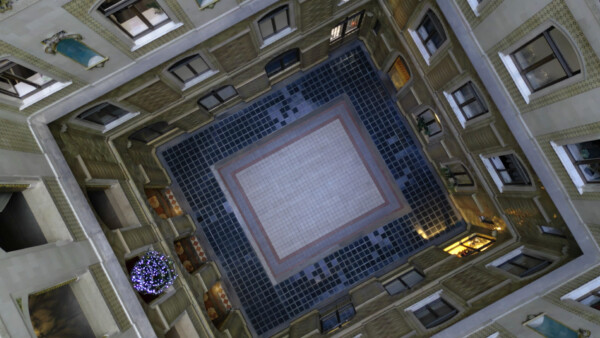
Baroque pearls between St. Stephen's Cathedral and Hofburg
Churhaus on Stephansplatz – Palais Bartolotti on Graben – Palais Cavriani on Habsburgergasse
The so-called Churhaus is located on the most famous square in Vienna - right next to St. Stephen's Cathedral. Even though nobility, namely higher-ranking clergy, also lived in this beautiful baroque building, it is not a classic aristocratic palace, but had many extremely diverse functions. From the construction hut of the cathedral to the Probsthof. Cathedral archivist Reinhard Gruber leads Karl Hohenlohe through the house, shows the most beautiful rooms, also reveals which areas could also be accessible to visitors, where a hundred years ago people still celebrated and drank heavily, what women's underwear has to do with the Stefflspitze and - how the construction of the subway in the 70s help the parish have fun Zumba lessons today!
Just a few steps further is the next baroque pearl: the Palais Bartolotti-Partenfeld, known as the oldest house on the corner of Graben and Dorotheergasse. Now privately owned by two families, the house has a history that goes back to the Middle Ages - before the Italian Bartolotti count family converted the previous house into a baroque city palace, where even the Empress liked to come to dance and celebrate, there were pharmacies at this address for a very long time. Karl Hohenlohe delves into early medicine with city guide Barbara Wolflingseder, learns about the old farming rules and their connection to this house and gets to know the processes surrounding audience visits to the imperial court and the job profile of the chamberlain. The highlight of the tour is a visit to one of the private apartments and the original baroque attic, from where you have a magnificent view of the neighboring Hundertwasser roof studio, the Steffl and the Graben.
Just a few steps further towards the Hofburg, Karl Hohenlohe reaches the Baroque Cavriani Palace in Habsburgergasse, which is at least known among public - although it is practically within shouting distance of the much-visited Hofburg. Tenant Thomas Pertschy, daughter Mariella and the dog Atlas lead a tour of the house, which is in the immediate vicinity of the imperial stable castle, where the Lipizzan horses are now housed. From a childhood stories in the palace, mandolin players in the courtyard and horses in the vaulted cellar to today's use with sustainability in mind, Karl Hohenlohe learns some entertaining stories and also finds out how today you can enjoy a stay on the first floor of this baroque palace and live like a prince.
Unusual Vienna palaces
The hidden palace in the former k.u.k. War Ministry on Stubenring - Archbishop's Palace on Stephansplatz - Palais Equitable on Stock-im-Eisen-Platz
There are no ordinary aristocratic residences that Karl Hohenlohe presents in this episode of Vienna’s Hidden Palaces - Season 3. Two of them served nobles for representation purposes and as a residence, but in connection with their respective offices. And although one could not be more magnificent and prominent and also has state rooms, it is actually a business palace - with a very interesting history.
The “builder” of this gigantic object under the reign of Emperor Franz Josef was none other than his heir to the throne, Archduke Franz Ferdinand. We are talking about the former k.u.k. War Ministry on Stubenring, still today a closely guarded government building with several ministries and sections, which is why very few Viennese have ever seen it from the inside. Why does this house still fit into our series? In the innermost part of the middle wing there was a small residential palace, embedded in the extensive administrative wings, but still with state rooms, a ballroom and even a riding arena! The resident was the penultimate war minister, Count Alexander von Krobatin, who remained single and had no family and no noble residence... and so he walked from his bedroom directly to his office or received guests in rooms lavishly wallpapered and furnished with art objects. What's left of it today is discovered by Karl Hohenlohe and Christian Gepp (castle guard) on their walk through the building complex.
Church princes are princes too – at least they were once. At the time when the Archbishop's Palace was built on Stephansplatz. A huge building complex with three addresses on three streets, from which the many small shops on the ground floor are now mainly visible from the outside. The ceremonial officer of Cardinal Schönborn, who lives in the magnificent palace, Deacon Wolgang Moser, welcomes Karl Hohenlohe at the venerable gates, leads him through the chambers and tells about the long, eventful and even tragic history of the house, about its current diverse uses, the current four residents of the palace and also has one or two delicacies in store. For example, the fact that there was a prison for disobedient priests!
Within sight of the Archbishop's Palace is the chic Palais Equitable, from the turn of the century, which enchants with its architecture and international flair. The location can only be described as sensational: Prominently located on Stock-im Eisen-Platz, it gives the intersection of Kärntner Straße and the extended Graben its unmistakable face. The private owner of the first floor with the huge windows facing Stephansplatz opens his door exclusively for ORF III and lets us enjoy the view, Katrin Unterreiner explores the house with Karl Hohenohe, the marvelous inner courtyard and tells stories from the flourishing business life of the fin de siecle, from the builder of the palace, from the great plans for metropolitanization of Vienna, how the emperor felt about it and from the Austro-Hungarian Empire. Traditional businesses that have settled here near the Kaiserhof. All of this crowned with spectacular views and insights into Vienna's city center!
Unknown palace in front of the city gates
Palace of the Salesian Sisters on Rennweg – Palace of the Kreuzherren behind the Karlskirche – Palais Appony in Johann Strauß Gasse.
Empresses and emperors, pious women, charitable gentlemen and a scandalous couple - these are stories that in this episode of "Vienna's Hidden Palaces" take us to the former city gates to three palaces that are very close to each other in the third and fourth districts. And – all in a neighborhood that Karl Hohenlohe knows like the back of his hand! You would think it would be a home game for a local resident, but “neighbor” Kari has never set foot in one of these houses!
A visit to the Baroque Palace of the Salesian Sisters is a real sensation, as hardly anyone has ever seen it from the inside. Donated by the Empress Wilhelmina Amalia, on the very day of the birth of her niece and the later regent Maria Theresia, this “Monastery of the Visitation of Mary” is the oldest women's monastery in Vienna. Since the Empress, as a widow, moved out of the Hofburg's Amalienburg, which was named after her, to spend the end of her life here with the Salesian Sisters, there are magnificent rooms and facilities. The extensive garden extends to Belvedere Palace. No one has any idea what beauty lies behind the street-facing façade! Wilhelmina Amalia, wife of the Habsburg Emperor Joseph I, refused to have a place in the Kapuzinerguft with her husband, and so Karl Hohenlohe was allowed to visit her grave in the crypt of the associated church.
And the history of the next palace, the Kreuzherren Palais, also begins with an emperor: the Emperor Charles VI. Keeping his vow to found a church after the end of the plague, he handed over the pastoral care of the Karlskirche to the Order of the Cross. This order has looked after the Karlskirche since 1733 - until today! Cross lords were traditionally active in hospitals, nursing and poor relief. Karl Hohenlohe visits the Father Provincial of the Kreuzherren, Marek Pucalik, in the state rooms of the palace and finds out what has happened in the large building complex between Kreuzherrengasse, Hoyosgasse, Gußhausstrasse and Argentinierstrasse since Charles VI. and gets a tour of the beautiful house. Little surprise: Karl Hohenlohe realizes that he has been in this house before! When he was in elementary school, his Boy Scout home lesson was in the basement...
The Wilhelminian style Palais Apponyi impresses with a story that is connected to one of its most famous residents: court painter Heinrich von Angeli, famous portrait painter of the high nobility and the imperial family, lived here. And not just in Vienna - other courts in Europe also invited the artist to have beautiful portraits made. Even the English Queen Victoria regularly had Angeli portray her.
In Vienna, however, there is a somewhat spicy story, as Karl Hohenohe learns from Angeli's descendant and author Wolfgang Pfarl: According to this, Empress Elisabeth commissioned her lady-in-waiting Ida Ferenczi to have Angeli make the most flattering portrait possible of the actress Katharina Schratt. Her astonishing motive: The husband should take a liking to the pretty lady and have a “chatterbox” with her, so that “Sisi” knows her husband is busy and can pursue her own interests in peace!
© Clever Contents GmbH 2025, Imprint, Data security, AGB